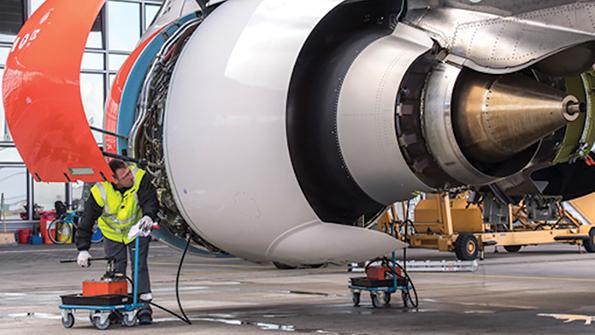
Lease returns for aircraft and engines have long been considered complicated and often costly processes. This is due to various factors such as the logistics of redelivering the asset to the right location and then having it inspected by the multiple parties involved in the handover to ensure lease terms are met. Since the outbreak of COVID-19 has restricted the movement of many aerospace assets across borders due to global travel shutdowns, these processes have become more complicated for lessors and lessees alike.
“The biggest problem that people are experiencing today is the inability to travel and the inability for people who are traveling to stop off. Moving aircraft and engines around is difficult, as there are a number of countries that are closed,” said Allan Rennie, technical director at asset management specialist KV Aviation, during Aviation Week’s “Assessing the Challenges of Lease Returns” webinar in late April.
Aside from redeploying the asset, getting access to the necessary manpower for the lease-return process is proving to be challenging. “Trying to get technical consultants into a position to actually do a lease return is also very difficult,” Rennie says. “The number of agencies we use are all employing local nationals to do their returns in their hometowns and countries, so as a result the skillset isn’t readily available, depending on where the return is actually taking place.”
Graeme Crickett, chief technology officer of SMBC Aero Engine Lease, also cites manpower issues emerging during the downturn. “Our greatest issue isn’t just trying to find somebody on-site to do our technical redeliveries for us, but also talking to the airlines,” he says. He attributes this to revenue-starved carriers laying off or furloughing employees in the wake of the novel coronavirus.
Crickett shares pessimism across the industry as a whole about the future for some carriers, with airline insolvencies and financial distress on the horizon, and he foresees the crisis lasting another 3-4 months at least. “Some airlines are not going to recover,” he says, citing a lack of cash, resources or government backing while also believing that some widebody operators could find conditions tough. The knock-on effects of aircraft order cancellations and the lack of new commitments are expected to affect not only OEMs but to a lesser extent some MRO shops, Crickett believes. “They’ve spent years scaling up and now suddenly have to turn back—that’s a huge knock-on effect,” he says. However, Crickett is hopeful that the industry will grasp the opportunity for a greater push toward e-signatures post-COVID-19, which would be a positive change.
Bill Gibson, a partner at law firm Vedder Price, says that before the novel coronavirus, both the redelivery of the asset along with the transition of an aircraft or engine to a follow-on operator were complicated procedures. He cites several reasons why this has been the case, ranging from reaching agreement between the lessor and follow-on lessee about the condition of the asset to “more prosaic” complications such as getting the necessary parties to sign documents and having them notarized or legalized as part of e-registration requirements.
In this still-evolving environment, Gibson says new approaches will be necessary. “If before all of these complications we were having to plan ahead, now we are really having to plan a longer timeline,” he says. However, even now he is already seeing the impact of COVID-19. “In terms of timing, we are seeing an awful lot of scheduled redeliveries move sideways just because of all these difficulties and at a fluctuant time, and that can create a problem.” he says.
Rennie of KV Aviation believes there likely will not be relief in the short term for these complications and sees them remaining for some time to come. “The difficulties we are seeing now will probably continue for the next 12-18 months until every country relaxes some of their travel and immigration policies,” he says. With the added possibility of further measures being imposed—such as screening passengers pre-flight—there are concerns that this may further deter travelers and lead to a further knock-on effect on the leasing of assets. “There’s going to be another level of complication getting people from A to B and, equally, getting the right people in the right place to do MRO returns, engine returns and aircraft returns—it’s another level of complication that we’ll have to work around.”




